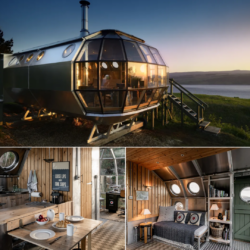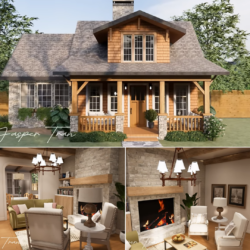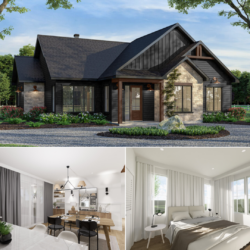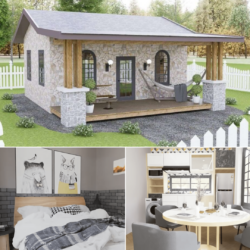
In the modern world, sustainability and minimalism are becoming more and more important. With these changing trends, people have sought smaller and more practical living spaces. Comfortable tiny houses of 42 m2 offer the perfect solution to meet this need and make life simpler and more meaningful.

Tiny house design aims to create a multifunctional and stylish living space where every square meter is used with maximum efficiency. This design philosophy helps people move away from their unnecessary consumption habits, reduce their impact on the environment and alleviate their financial burden. Many people have discovered the simplicity and freedom of living in a smaller home, and tiny homes continue to grow in popularity.

The basic design principles of tiny houses include practical solutions for needs. Foldable furniture, wall beds, and hidden storage areas are often used in these homes to save space. In addition, it is aimed to use natural light as well as possible and to create a spacious atmosphere with open-plan arrangements. In a tiny house, keeping everything in its place and keeping it organized to avoid clutter is of great importance.

A 42 m2 comfortable tiny house can be designed to meet the needs of the living person or persons. For example, a basic tiny house usually has a living area, a bedroom, a kitchen, and a bathroom. The fact that the walls are mostly glass brings the natural scenery inside and enhances the sense of space. At the same time, green technologies such as solar panels and rainwater harvesting systems can be used for energy efficiency.

Furniture that combines functionality and aesthetics is important in tiny houses. For example, folding dining tables, convertible armchairs, and bedroom storage solutions are designs that make the most of space. The color palette and decoration materials used make the interior spacious and inviting. The choice of natural materials reflects the sensitivity to the environment and supports a natural lifestyle.

One of the advantages of tiny houses is that they are economical. A smaller house means lower construction costs and less energy consumption. At the same time, tiny homeowners have fewer financial obligations, and having fewer items liberates them both financially and morally.

With the increasing popularity of tiny houses, communities that adopt a lifestyle compatible with this design philosophy have also begun to form. Tiny homeowners share their experiences through social media and events, highlighting the joys of living in these small but functional homes. These communities have become a valuable resource where people come together to support tiny home designs, share their experiences, and inspire each other.

One of the reasons behind the popularity of tiny houses is to adapt to changing lifestyles. Today, people adopt a more active and flexible lifestyle. Changes in working conditions, increases in job opportunities, and remote working opportunities have caused people to desire to relocate and have experiences in different regions. Portable tiny houses are an ideal solution to meet these needs.

Another important point is the potential of tiny houses to reduce living costs. Traditional homes often have higher rent or mortgage payments, taxes, and maintenance costs, while tiny homes tend to have lower costs. Low energy consumption and having fewer items reduce costs in the long run and provide financial freedom for people.

Tiny house design also offers a variety of social benefits. Especially seen as a solution to the housing crisis in big cities, tiny houses take up less space and allow a denser population to live in cities. This allows for more sustainable and diverse communities to form in city centers.
Tiny houses are also an experience and a way of life for those who adopt an alternative lifestyle. With a minimalist approach, living a life focused on accumulating experience and memories rather than material possessions can help people feel happier and more fulfilled. Having less material possessions can bring more freedom and spiritual fulfillment.
But tiny home life can also involve some challenges. Limited space requires people to carefully select and organize their belongings. In addition, it is necessary to be careful in design and arrangement to create a comfortable living space. If living in a shared community, solidarity and respect are necessary to live in harmony with neighbors.





